Earning some new wings at RAF Brize Norton
It’s been a couple of months since I qualified as a pilot and it wasn’t long before I felt ready to take on the next challenge in my flight training. Having learned in motorgliders (significantly cheaper but trickier to fly, thus teaching greater flying finesse), the next step was to add another rating onto my licence that would enable me to fly light aircraft, such as Cessnas and PA28s, which are bigger and more powerful than motorgliders. To this end, we set aside a day to fly to RAF Brize Norton so that I could complete the necessary ‘differences’ training with Matt, who’s the CFI of the flying school there (he’s the examiner for our flying club – the same examiner who passed me on my Navigation and General Skills Tests earlier this year).
This was our view on final approach into Brize in the Dimona. I stuck my phone out of the window to get it! Being a military airfield (and the biggest in the country, at that), Brize isn’t somewhere you can normally fly into, so we were very lucky to be able to do so on account of knowing Matt.
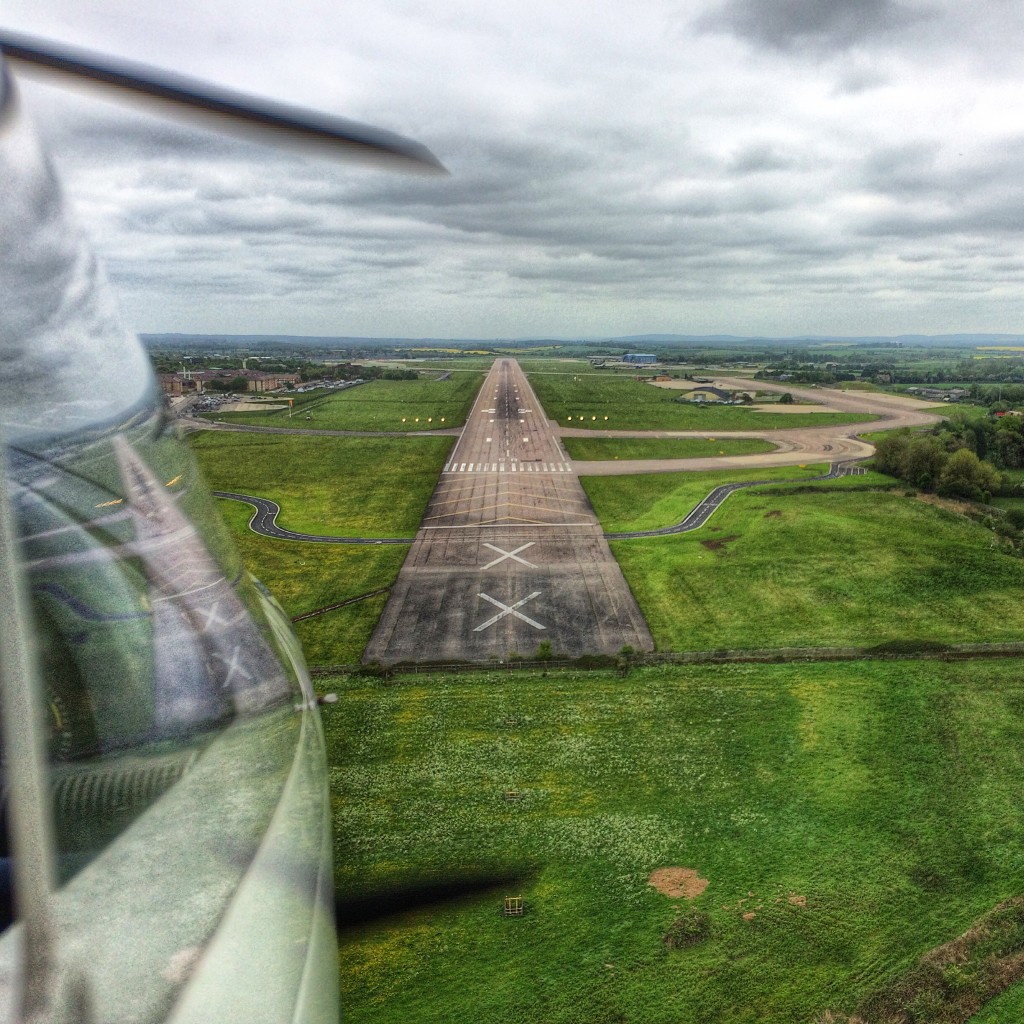
This was to be my steed for the day: a Piper PA28 Warrior. It was built in 1981, which actually makes it older than Wilhelm! I’d never flown one before, but have always wanted to. The nearest thing I’ve flown to it was Lee’s old Cessna 172, which looks different but handles/operates in a similar way. My 172 experience certainly came in useful for the day’s training, as it meant that there were no real surprises.
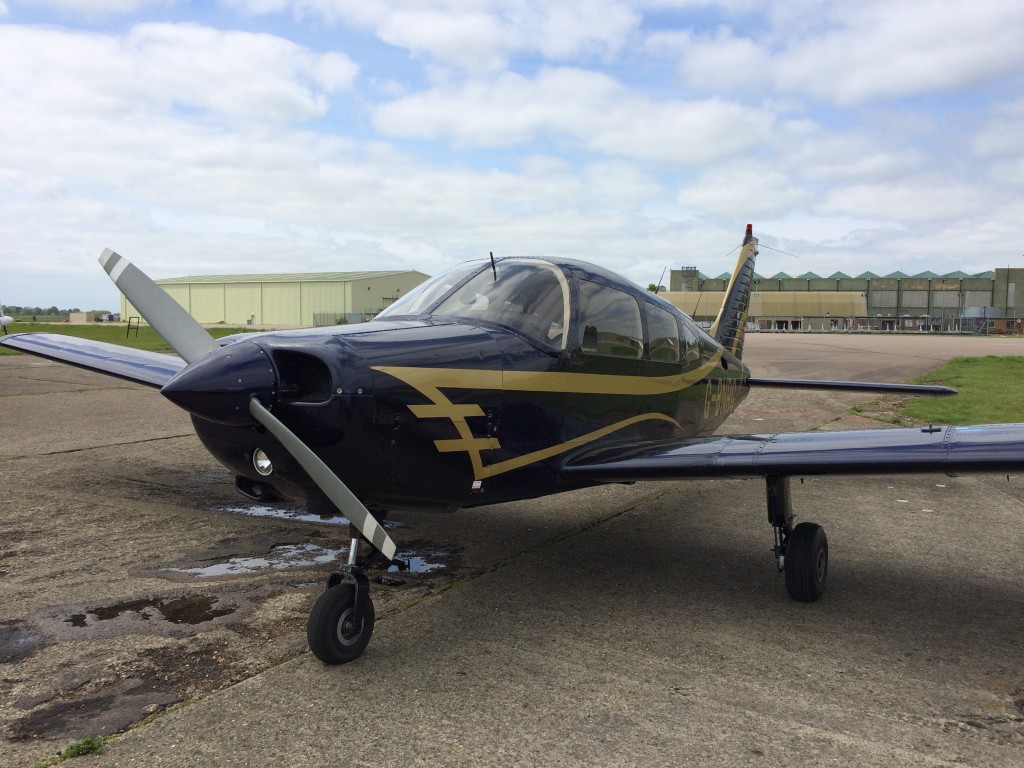
Here it is with our Dimona parked in the background. I would love to be able to share more photos of the Dimona with various heavy military aircraft in the background, but sadly I’m not at liberty to post pics of the awesome military planes.
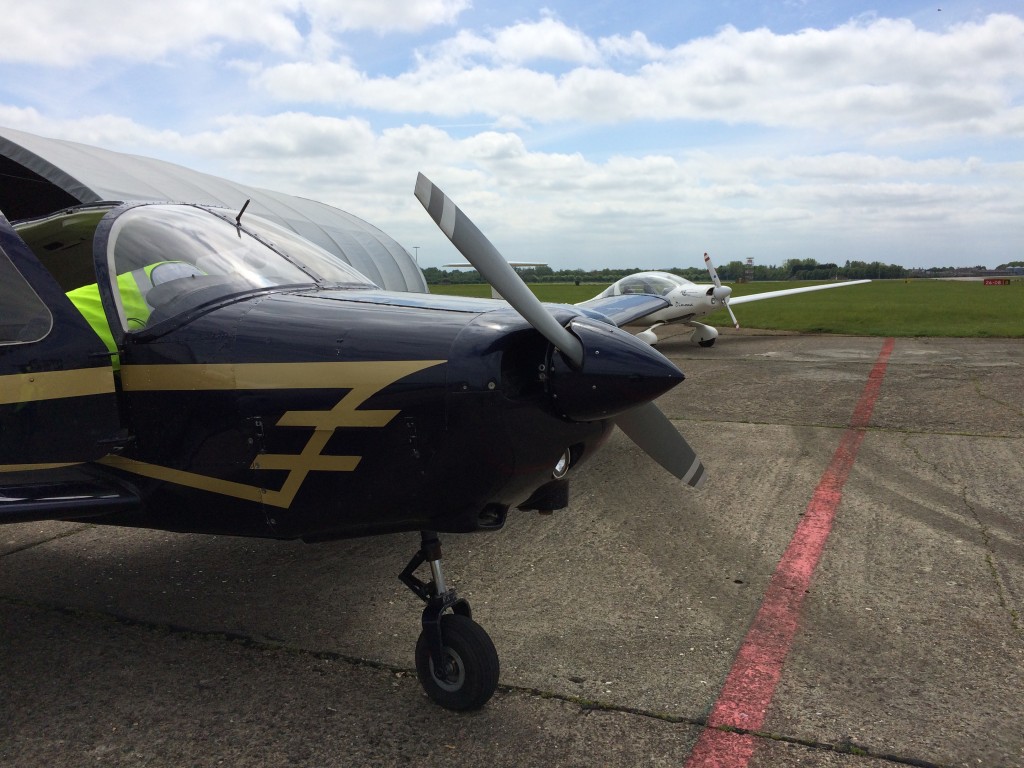
After briefing, we had a quick look around the plane and Matt showed me where the fuel cap is and things like that.
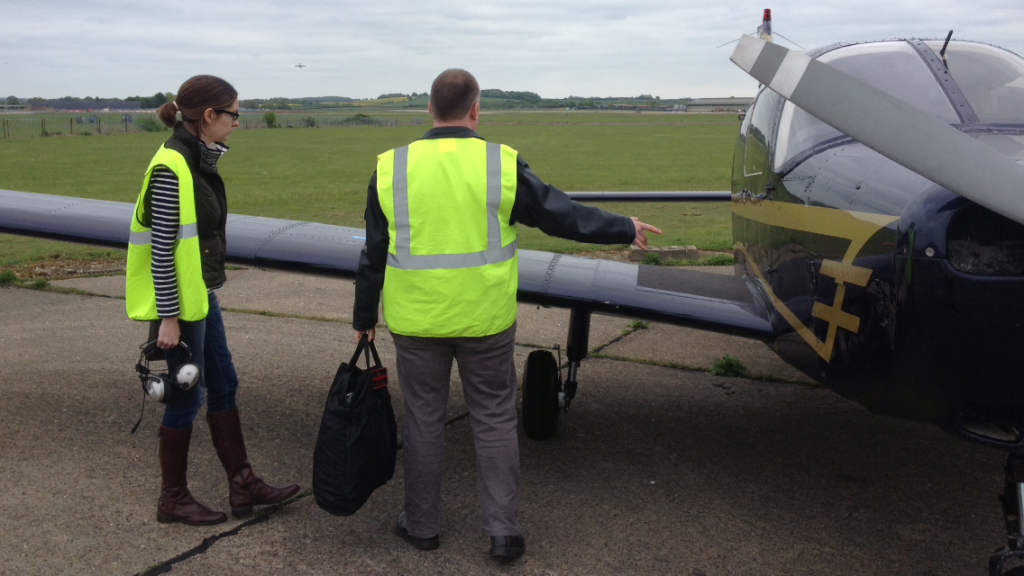
Clambering aboard!
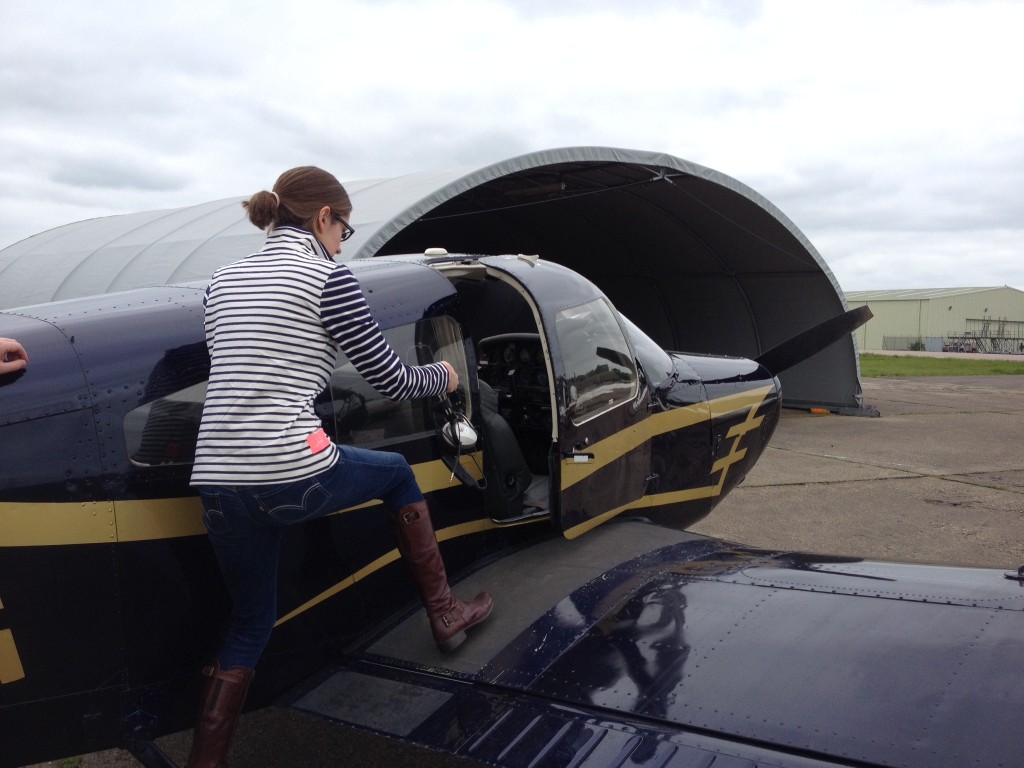
The pre-flight checklist was enormous, and it took quite a while to go through everything. Because Brize has full air traffic control, we even had to request engine start! Luckily Matt did all the talking on the radio as he’s so familiar with procedures there, and that wasn’t part of my differences training. Lee sat in the back and took all the photos!
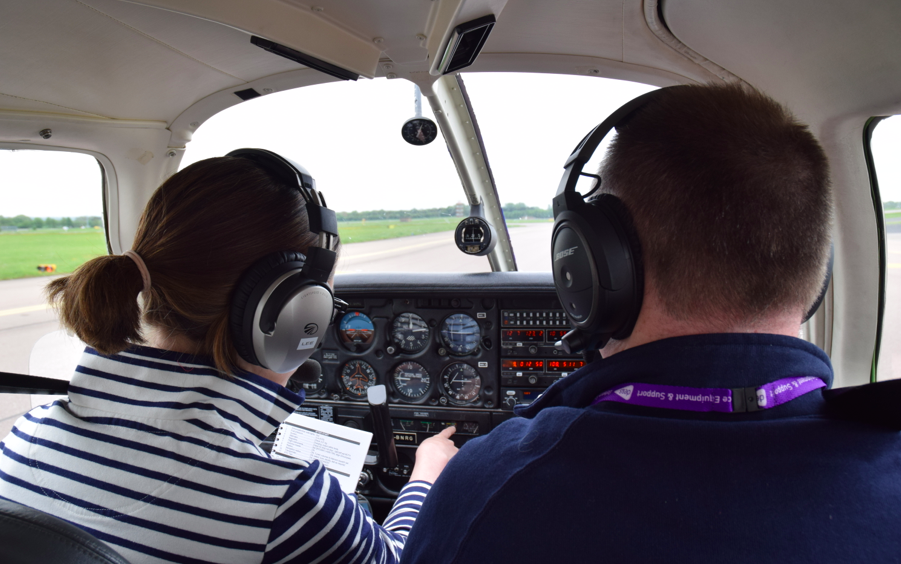
Take-off was really easy compared to the motorgliders I usually fly. With more power, it’s simply a question of getting to the right speed on the ground and then pulling back to rotate the aircraft to get airborne and into the climb, just like an airliner. It’s much trickier than that in the motorglider, as you have to lower the nose once airborne to get the right speed before climbing out, which feels a bit precarious. I’m glad I learned in the more difficult aircraft and then transitioned to the easier one, rather than the other way round!
The first thing we did was some steep turns to get me used to how the aircraft handles.
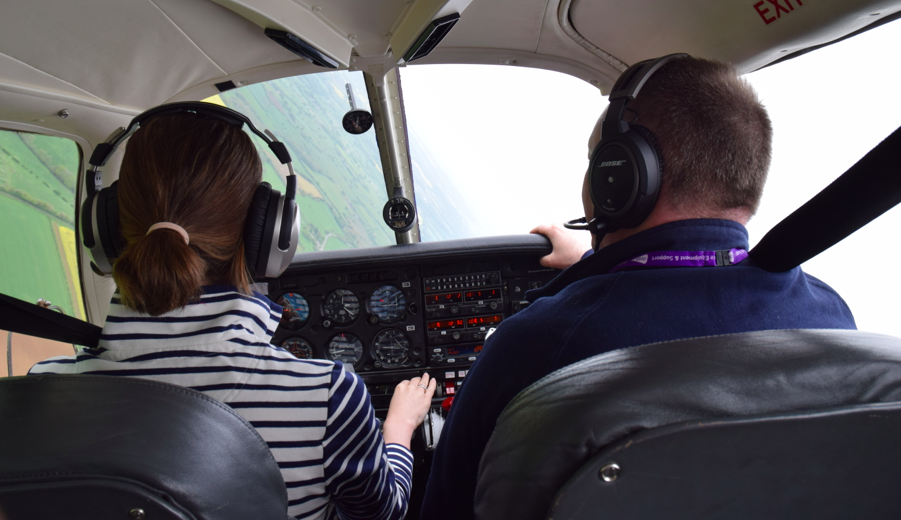
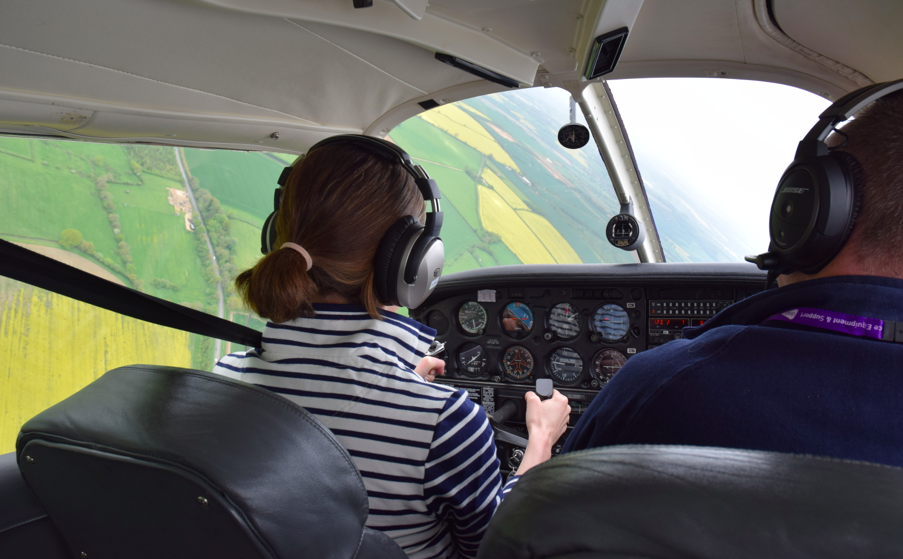
After that, we did ‘practice forced landings’, which are basically pretend engine failures where we set the power to idle and do an approach into a field. I did lots of these in my flight training in motorgliders, but it’s a little different in the PA28 as it has flaps not air brakes, and the speeds are different of course.
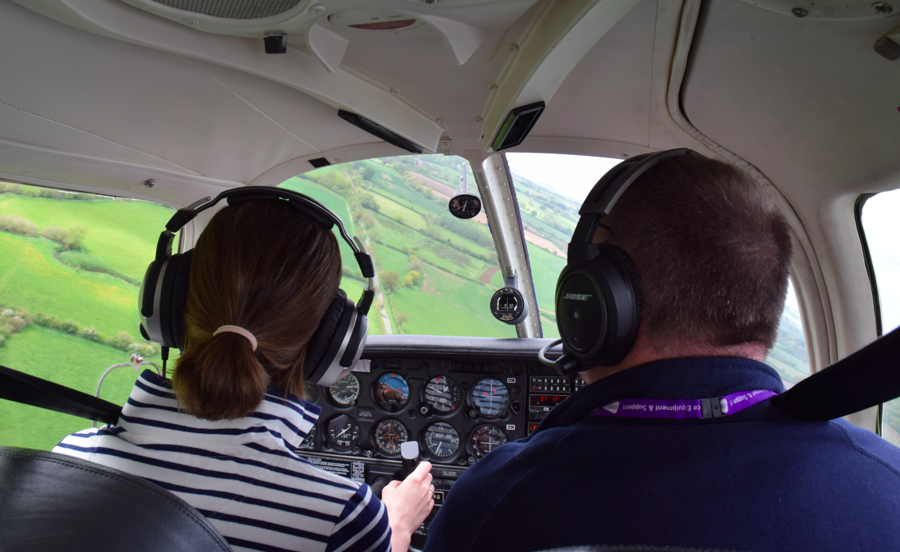
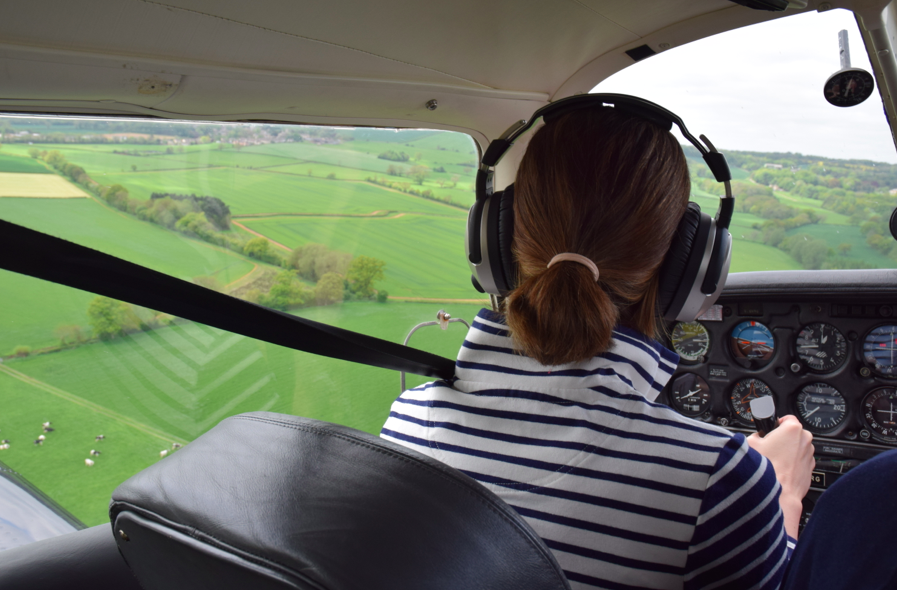
Here’s a video of me doing an approach into a field so you can see what it was like. As you can see, we don’t actually land but we get to the point at which you’d be confident you could land in the field in a real-life emergency.
After that we climbed above the clouds to 5,000ft, which was amazing. At that point it was mostly overcast, with only a few little gaps for us to climb through (Matt is instrument rated and the plane is fully instrument equipped, so it was ok for us to do this! I wouldn’t be allowed to on my licence as I don’t have an instrument rating).
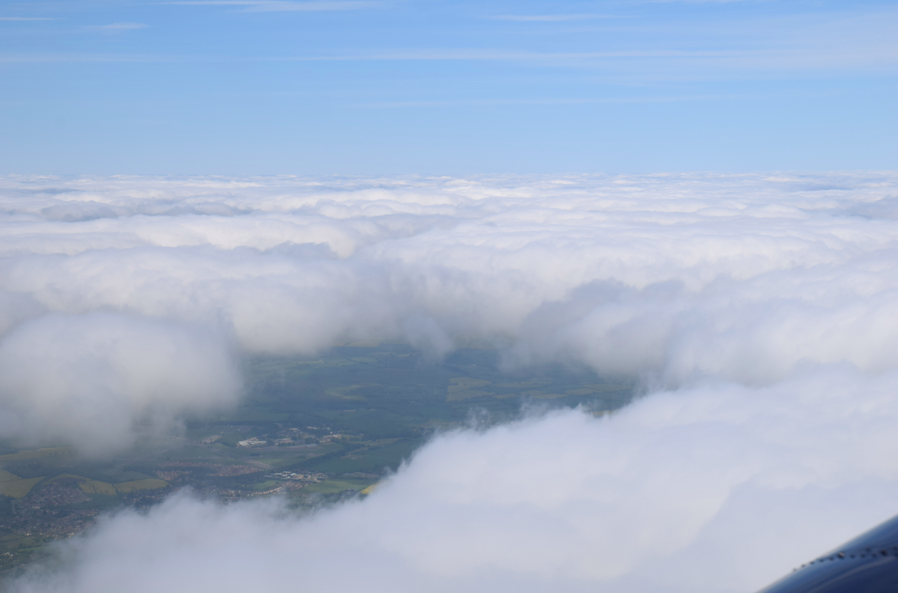
Above the cloud it was blue sky and sunshine, just like when you go on a commercial flight.
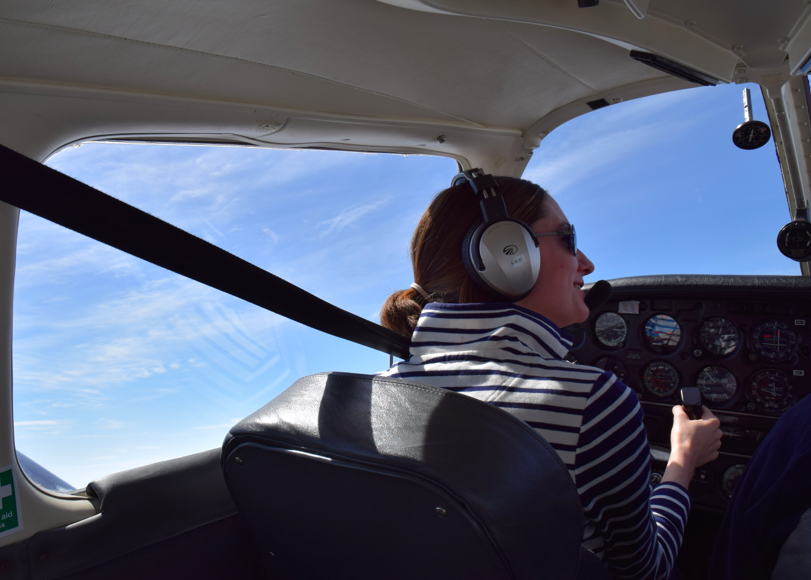
I did feel a bit like an airline pilot at that point!
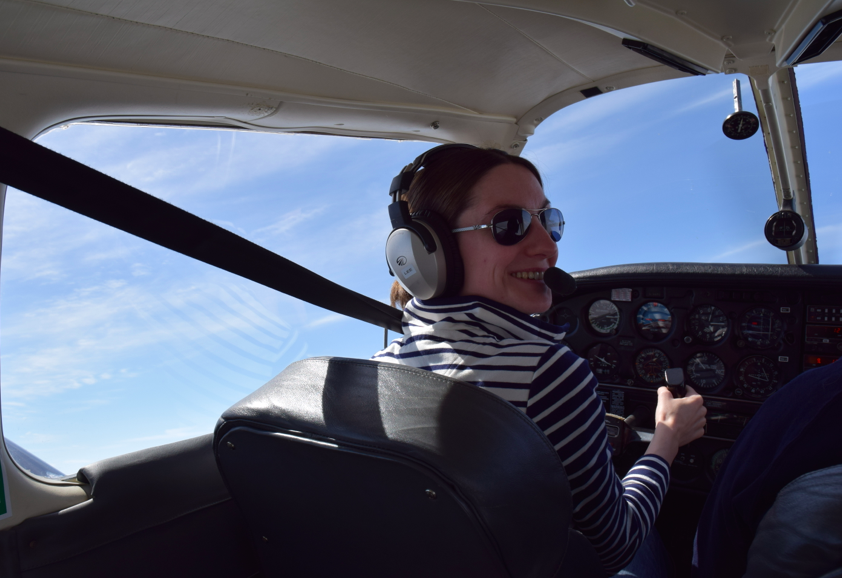
At that altitude we looked at another difference between the PA28 and motorglider – the ability to change the fuel mix to account for thinner air.
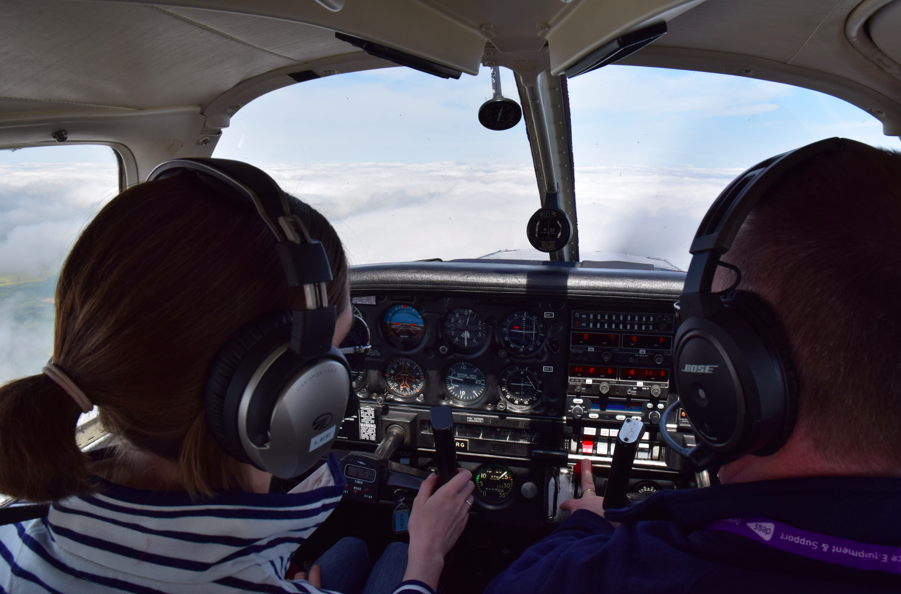
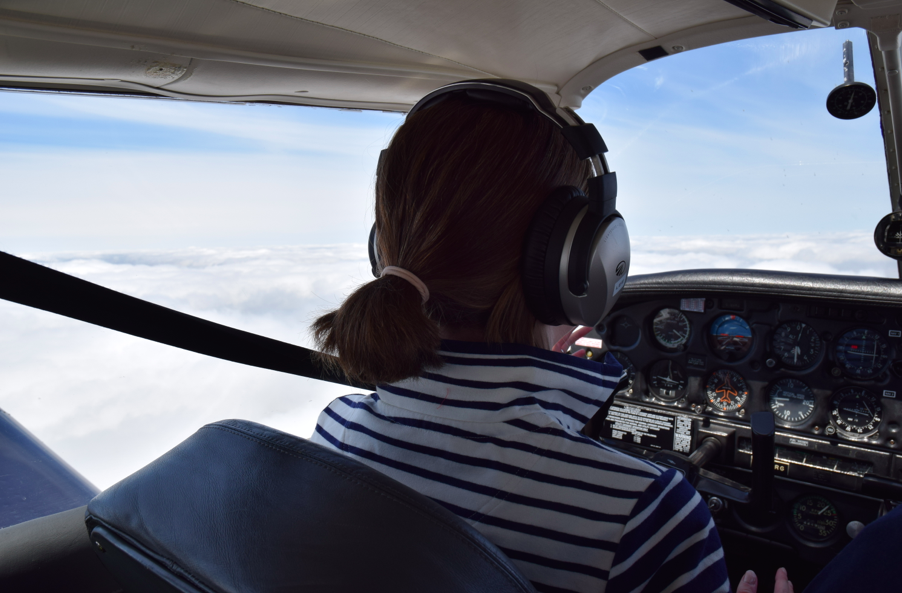
Having climbed through a gap to get above the cloud layer, we then had to descend through solid cloud to get back down. For this we upgraded to a ‘traffic service’ from Brize, which is where they tell you if there’s any other traffic that could conflict with your plans. I was quite pleased with my instrument flying as I made the descent. Rather than looking out of the window, which can be very disorientating, you fix your eyes on the artificial horizon to keep the wings level and it’s all about making as little movement on the controls as possible. Watch the video below to see what it was like!
Back beneath the clouds!
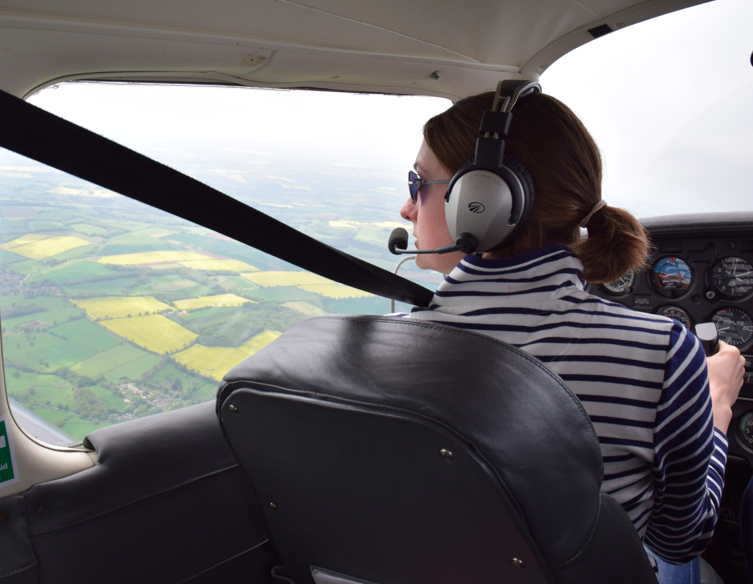
After that we headed back to Brize for some lunch. It’s difficult to convey how massive the runway is compared with what I’m used to. It’s over 3,000m and I’m used to more like 500m. It’s nice not to feel as though you might run out of runway!
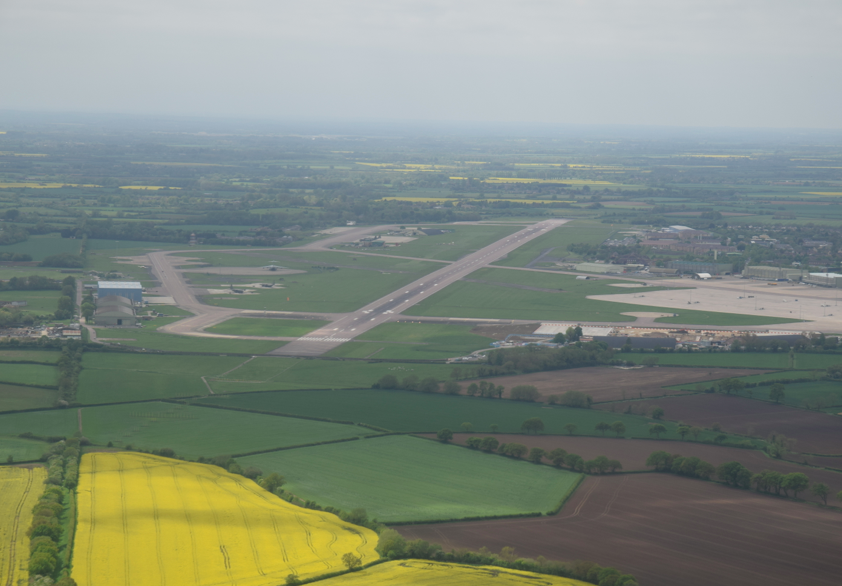
Turning onto final approach…
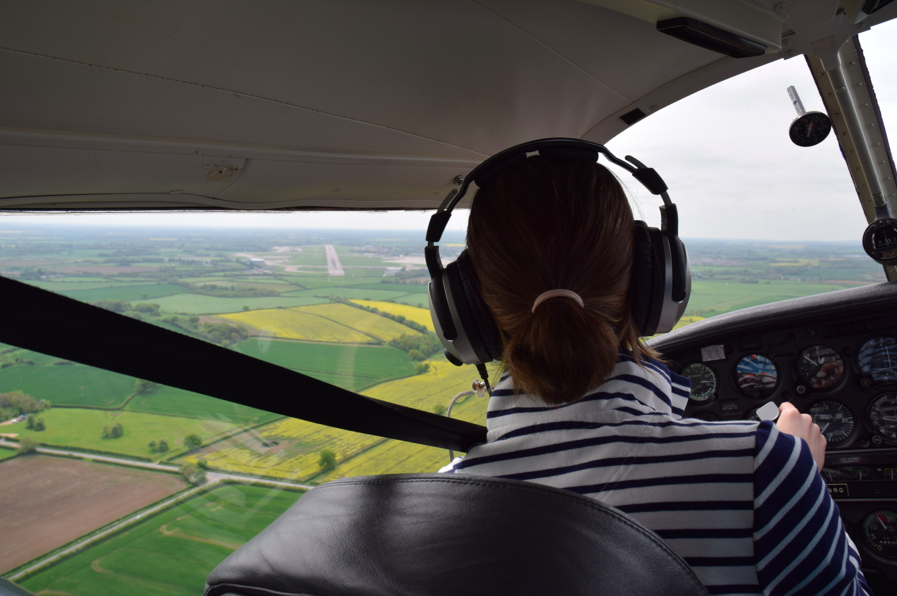
As with take-off, I was pleasantly surprised by how easy it was to land in comparison with the tricky motorgliders I’m used to flying.
Our GPS trace for the morning’s 1.5hr flight!
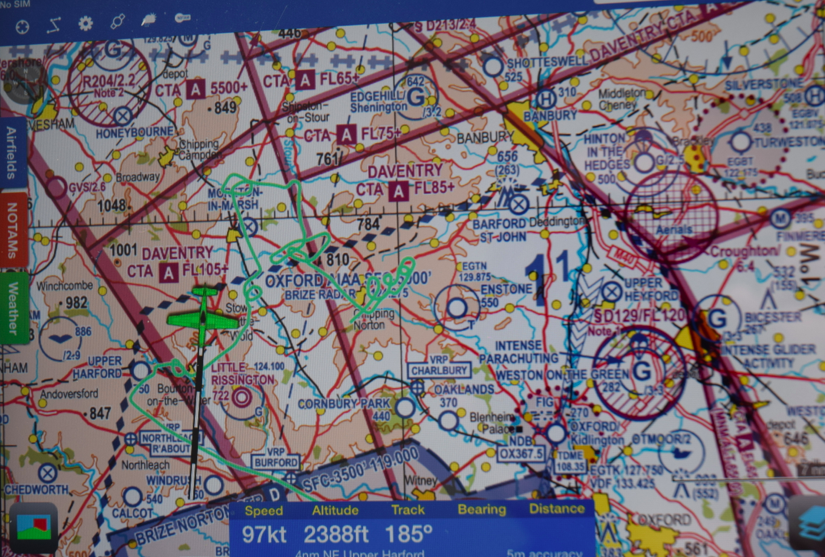
We had lunch in the terminal building, where many a soldier has left the UK for overseas war zones. It was pretty much deserted, but we just missed David Cameron arriving as we were on our way back to the flying club!
The plan for after lunch was to complete my training with a few circuits. We were actually in the circuit behind a Hercules at one point – so cool!
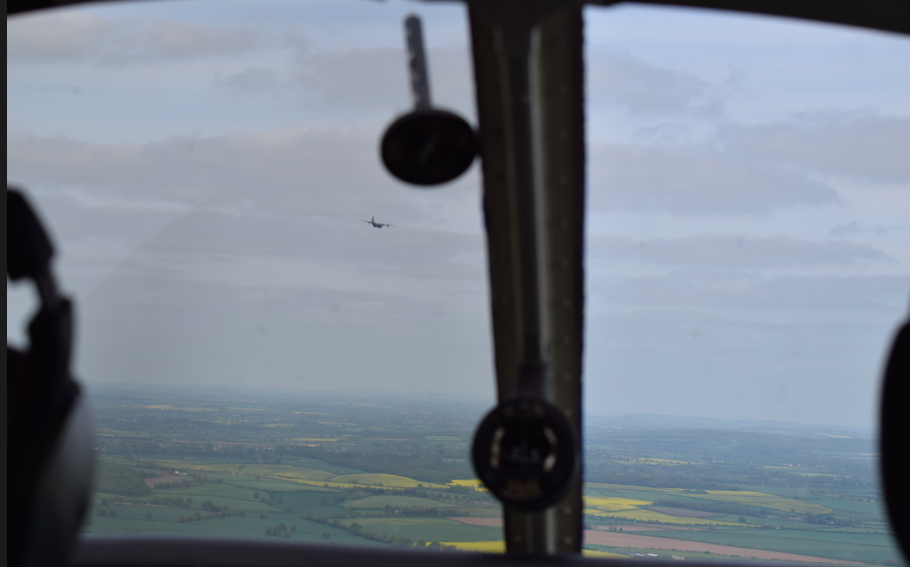
We did four circuits with various configurations, including a flapless approach (to make sure I could cope if the flaps stopped working), a glide approach (essentially a simulated engine failure with idle power), and a low-level approach (simulating having to land in bad weather).
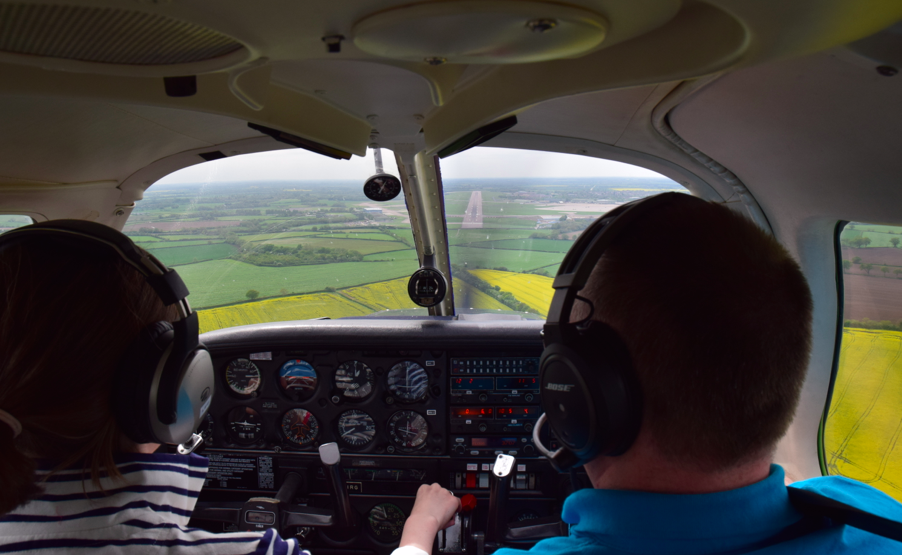
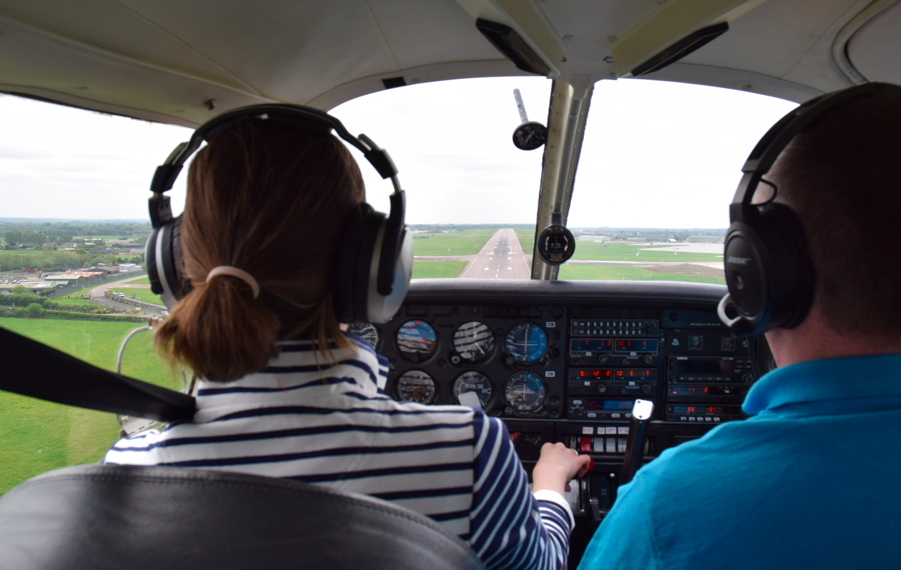
Here’s a final video showing you what it was like to do circuits (otherwise known as ‘Touch and Gos’).
This was me after we landed. I was very happy after such an enjoyable day’s flying!
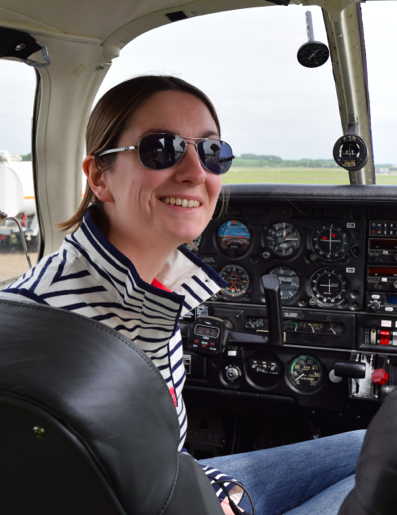
Obligatory standing on the wing shot…
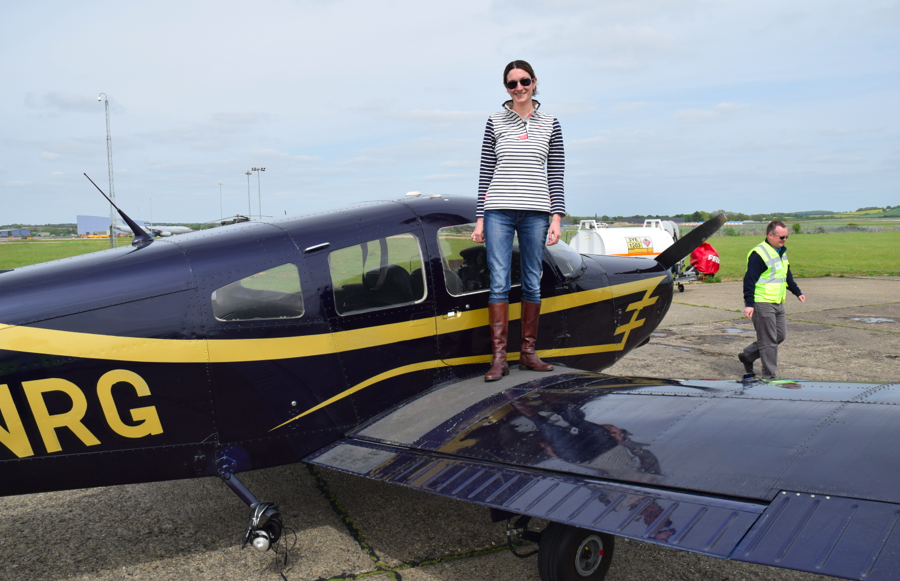
After completing the paperwork, we jumped back in the Dimona to go home. This was a final view of Brize on the climb out.
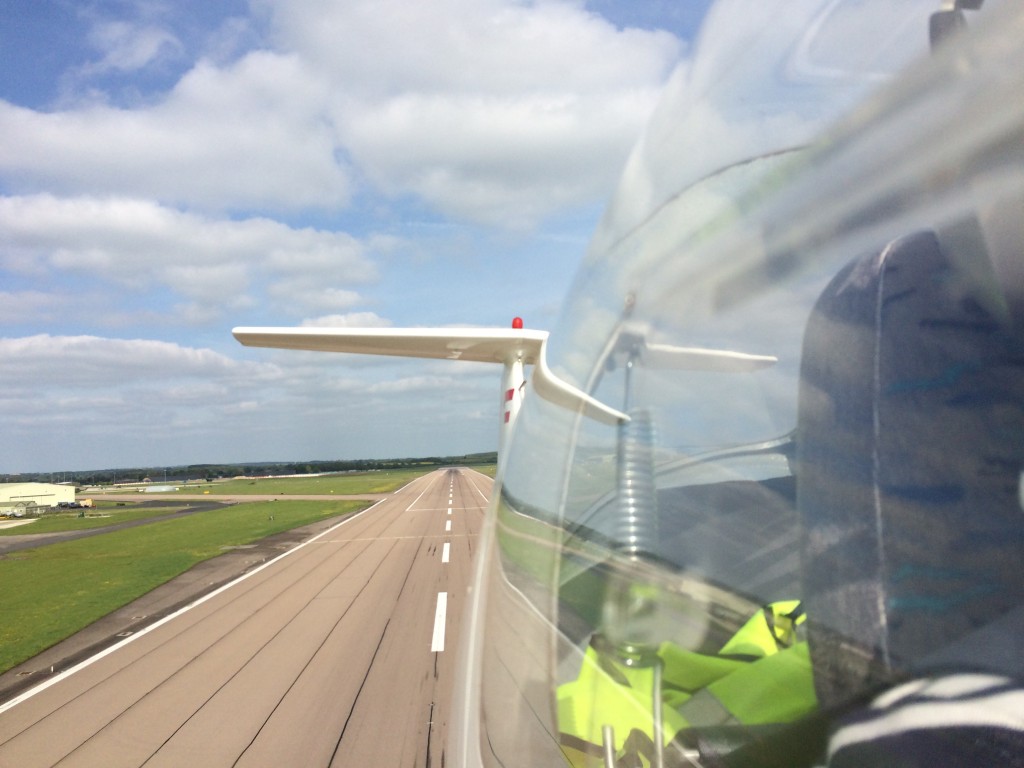
Now that I’ve successfully completed this training, I will have another rating on my licence, meaning that I’m now qualified to fly light aircraft as well as motorgliders, which is fantastic because this has been my aim ever since I started flying, back when I was at university. It’s also another thing to cross off my 30 Before 30 list (see item 6). A splendid and successful day all round, and hopefully I’ll do some more flying with Matt in the not-too-distant future.


David Ashforth
May 17, 2015 at 8:39 pm (9 years ago)Another tick on the licence. Well done you. Instrument qualification next?
Rachel McCombie
May 18, 2015 at 10:03 am (9 years ago)Not sure I’d be able to afford an instrument rating, but you never know :)
Andy Hawkins
May 18, 2015 at 3:07 pm (9 years ago)The IMC rating (now known as an IR(R) since EASA) is a good step towards a full instrument rating. There’s a minimum of 15 hours training, and once qualified it entitles you to fly IMC in Class D, E, F, and G as well as carry out instrument approaches to airfields in that airspace.
While not conveying the same privileges as a full IR, it is certainly a useful rating to have, particularly if you can operate to or from a field with approaches.
The main thing with Instrument Flight is that it gets rusty very quickly. I was very current when based at Lyneham, as at the end of virtually every return flight I would carry out an instrument approach. Sadly, since moving to Kemble, that option is no longer available, so my instrument flying skills get a lot less use.
Still a useful skill to have though.
Andy
Rachel McCombie
May 18, 2015 at 3:23 pm (9 years ago)Thanks for this useful information, Andy – much appreciated! I think it’s something I might look into one day, though I have plenty of challenges to keep me going in the meantime! It would be a great rating to have though, as I love going above the clouds. :)